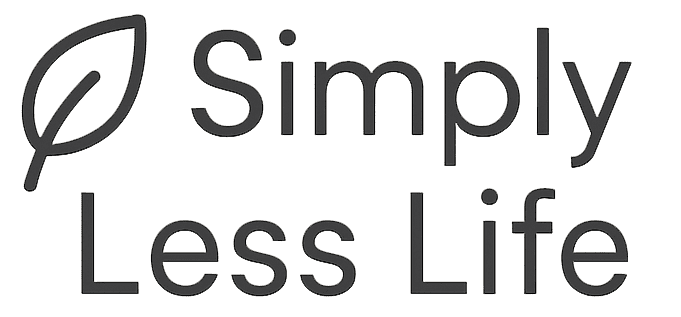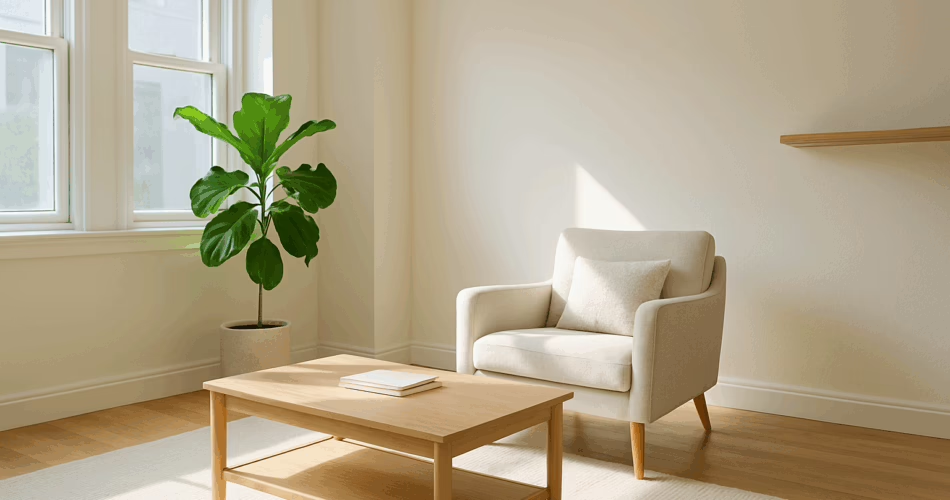1. Introduction: Living with Less Stuff and Decluttering
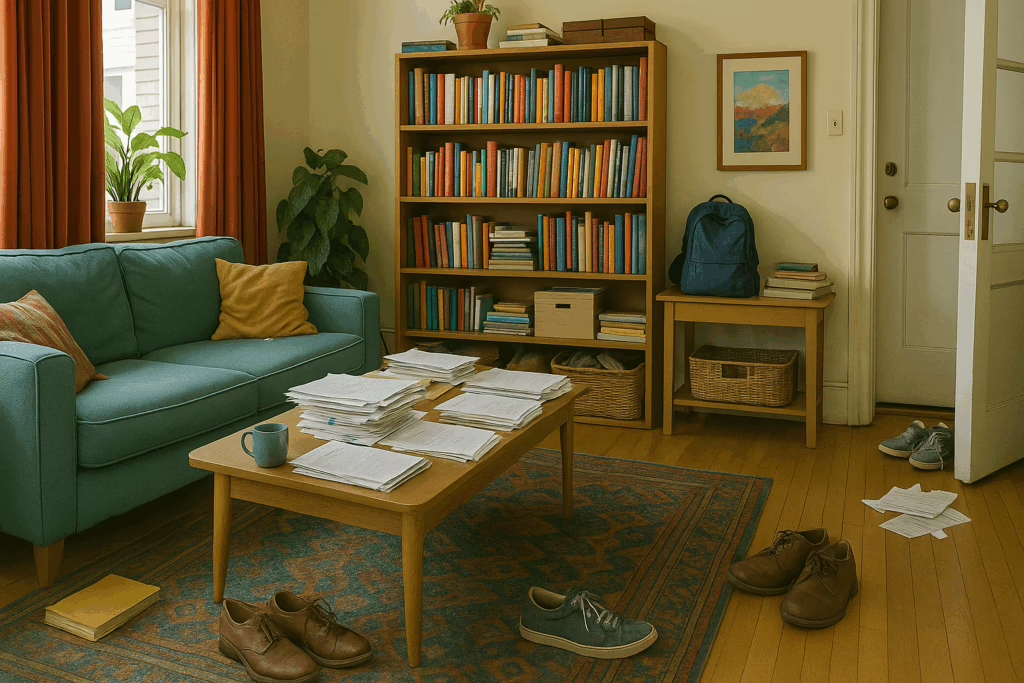
Living with less stuff and decluttering isn’t just a passing trend—it’s a gentle revolution happening in homes across America. Picture this: You come home after a long day, only to be greeted by piles of mail, clothes draped over chairs, and countertops barely visible beneath all the “stuff.” The constant visual reminder of things left undone can sap your energy before you even take off your shoes.
But imagine an alternative. What if your space felt light, inviting, and truly restful? For many, living with less stuff and decluttering is the first step toward reclaiming peace and control over daily life. The truth is, clutter isn’t just inconvenient—it can affect your mood, your productivity, and even your relationships. In fact, according to research on the psychology of clutter, disorganization in your home can trigger stress and make it harder to relax or focus.
Choosing to live with less stuff and decluttering doesn’t mean giving up the things you love. It’s about making space for what matters most. This shift can bring clarity and calm, turning your home into a sanctuary instead of a source of stress. Over the next sections, we’ll walk through the hidden costs of too much stuff, what “living with less” really means, and how to begin decluttering step by step—sharing practical advice, real-world examples, and resources to make the process smooth and rewarding.
Are you ready to see how living with less stuff and decluttering could transform your life?
2. The Hidden Cost of Too Much Stuff
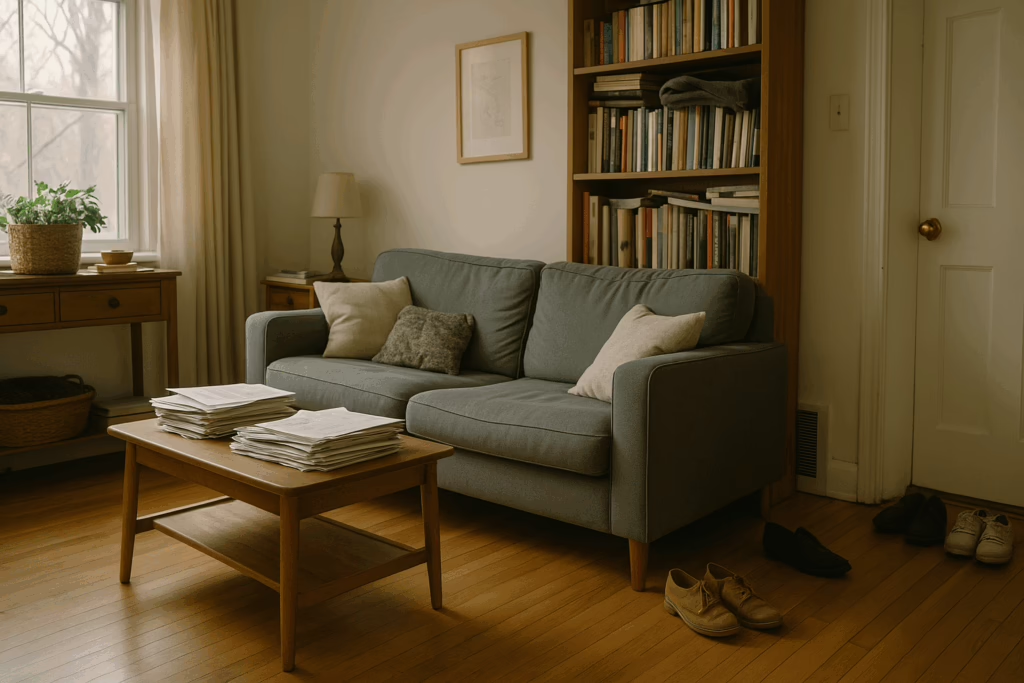
Living with less stuff and decluttering often starts with one simple realization: clutter is more than a cosmetic issue—it comes with hidden costs that impact nearly every area of our lives. When homes become overfilled with possessions, the effects can ripple out in surprising ways. Emotionally, constant clutter may leave us feeling anxious, overwhelmed, or even guilty for not keeping up. Financially, buying and storing excess items quietly drains money, sometimes leading to forgotten purchases or duplicate spending.
Take the story of a young couple in Chicago who moved into a spacious apartment, only to fill every inch with furniture, holiday decorations, and things they “might need someday.” Over time, they noticed their weekends disappeared beneath cleaning, organizing, and searching for lost items. Their stress levels rose, arguments became more frequent, and hosting friends became a chore instead of a joy.
The clutter tax is real, and science backs it up. Researchers at Princeton University found that visual clutter can reduce focus and increase stress. The New York Times explores how clutter seeps into our mental well-being, making it harder to relax and even sleep soundly.
Physical clutter can also become a time thief. All those extra gadgets, paperwork, and mismatched socks mean more to clean, sort, and maintain—leaving less time for the things and people that bring real value. For families, a cluttered home can become a source of conflict and frustration, especially when it gets in the way of simple daily routines.
Recognizing the hidden cost of too much stuff is the first empowering step toward change. When we see how clutter affects our mood, relationships, and wallets, living with less stuff and decluttering starts to feel less like a chore and more like self-care. Would you like to continue to the next section (What Does Living with Less Actually Mean?) or make any adjustments?
3. What Does Living with Less Actually Mean?
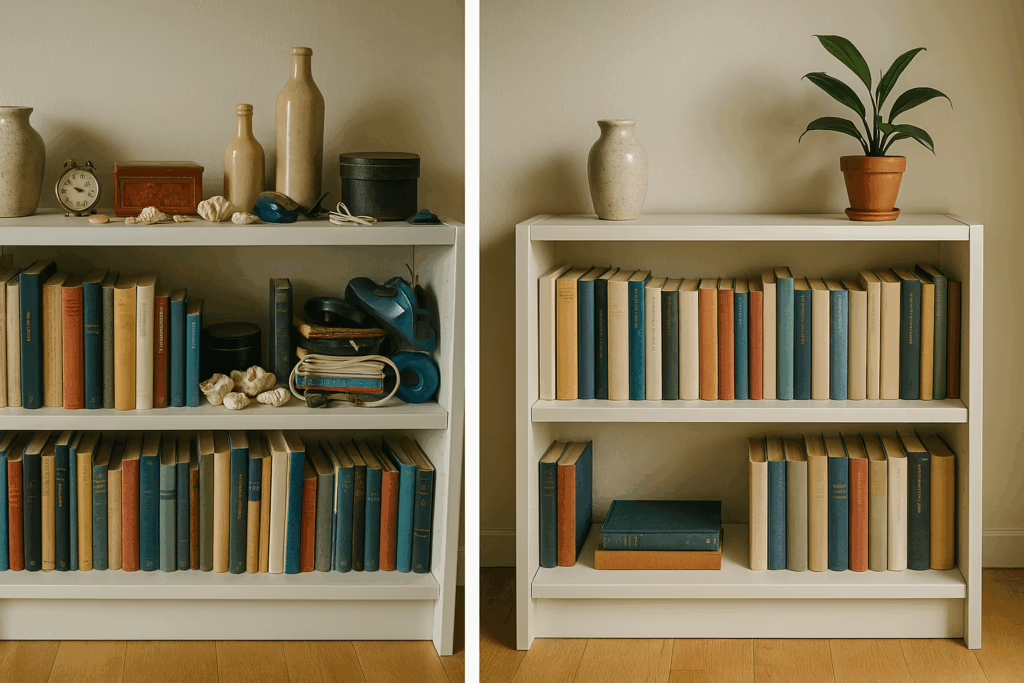
Living with less stuff and decluttering is often misunderstood. It’s not about throwing out everything you own or adopting a stark, minimalist aesthetic unless that genuinely appeals to you. Instead, it means consciously choosing what truly deserves a place in your home and life—curating, not just reducing. When you embrace living with less, you keep only what adds real value, function, or joy, while letting go of what weighs you down.
Decluttering is different from minimalism, though the two can overlap. Minimalism often aims for a pared-down lifestyle, sometimes with strict rules about how many items you own. Decluttering, however, is a flexible, personal process. You decide your own comfort level and pace. Maybe it’s clearing out a single drawer, or maybe it’s overhauling your whole home one room at a time. For most, living with less stuff and decluttering is about creating space for what matters—whether that’s more time with family, less cleaning, or a calmer state of mind.
One common misconception is that decluttering is an all-or-nothing event. In reality, small, steady changes often lead to lasting results. You might start with your closet or digital life, gradually building confidence as you see the benefits. Decluttering also isn’t about deprivation. It’s about freedom from the stress and distraction of too much stuff, allowing you to focus on what brings you happiness or helps you reach your goals.
Want to learn more about minimalism and how it compares to decluttering? Check out Becoming Minimalist’s guide to minimalism. It’s a helpful primer for anyone curious about the journey toward living with less.
In the end, living with less stuff and decluttering is about reclaiming your space and peace of mind—at your own pace, in your own way.
4. How to Start Decluttering: Actionable Steps
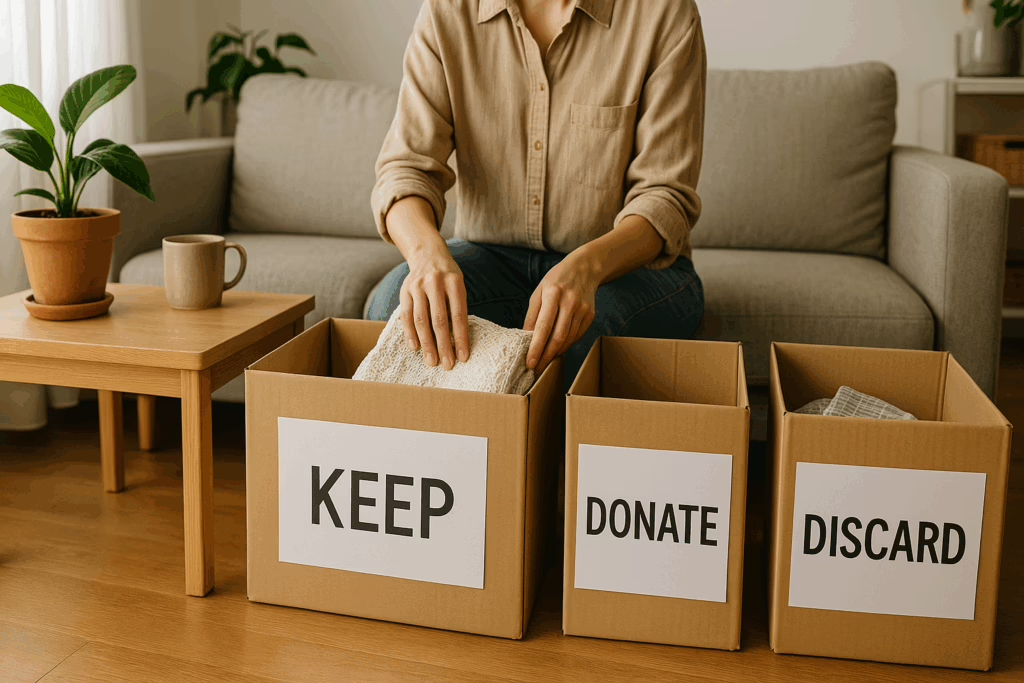
Living with less stuff and decluttering begins with a decision—but what comes next? Many people feel overwhelmed at the thought of tackling every closet or drawer. The good news is that decluttering doesn’t have to be exhausting or done all at once. You can start small, focusing on one space, and build momentum from there.
A great first step is to set an intention for why you want to declutter. Maybe you’re craving more calm, trying to simplify your morning routine, or hoping to make cleaning easier. Write your reason down and keep it somewhere visible—it’ll motivate you when you feel stuck.
Breaking the process into manageable tasks makes it less daunting. Try a room-by-room approach, beginning with an easy win: perhaps a bathroom cabinet or your entryway table. As you gain confidence, move on to more challenging areas, like your wardrobe or garage. Set realistic timelines for yourself; decluttering a whole home could take weeks or months, and that’s okay.
One popular habit is the “one-in, one-out” rule: for every new item you bring home, commit to removing another. This helps maintain balance and prevents clutter from creeping back. When sorting, use three simple categories: keep, donate, or discard. If you’re unsure, ask yourself if the item has been used in the last year or if it brings you real joy. For more strategies, explore The Minimalists’ decluttering tips.
Don’t forget about digital clutter. Organize files, unsubscribe from unwanted emails, and back up what matters. Decluttering isn’t just about physical things—it’s about clearing space in all aspects of your life.
By taking small, intentional steps, you’ll see progress and feel encouraged to keep going. Living with less stuff and decluttering is a journey, not a sprint—and every bit counts.
5. Real-Life Benefits: Stories of Decluttering Success
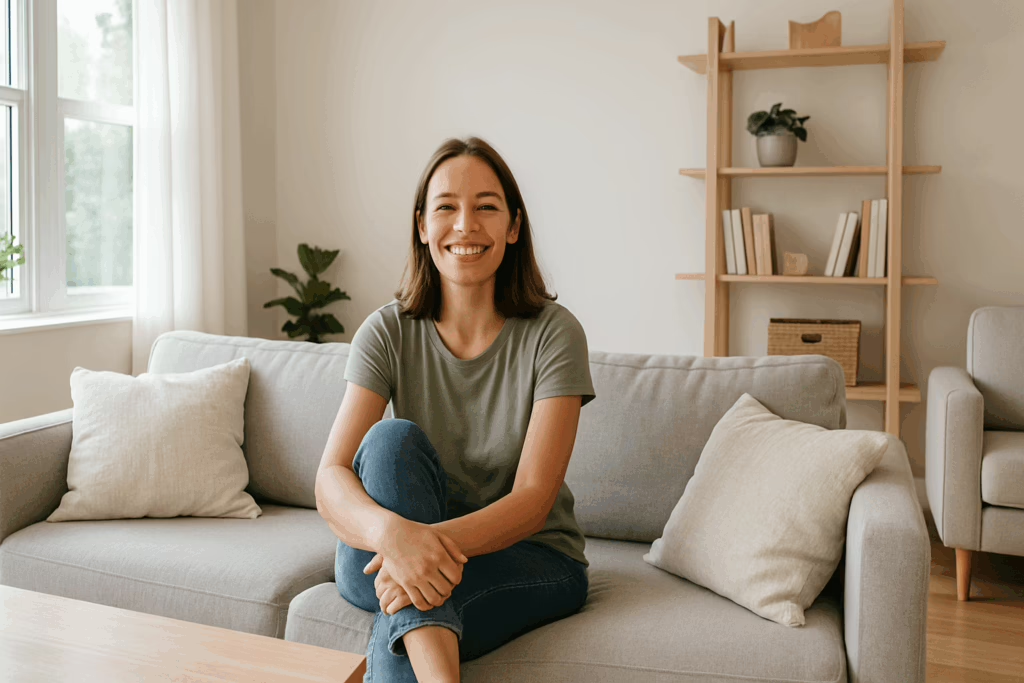
Living with less stuff and decluttering delivers benefits that go far beyond having a tidy space. For many, it unlocks a fresh sense of freedom, energy, and clarity. Consider the experience of a busy working mom in Seattle who, overwhelmed by mountains of laundry and crowded countertops, decided to try living with less. She began by tackling one room at a time, donating unused toys and kitchen gadgets. Within weeks, her family’s mornings felt less rushed, and weekends became more relaxing—no longer dominated by endless cleaning.
Decluttering can have a ripple effect on finances, too. One young professional realized she’d spent hundreds on duplicate products hidden in her clutter. After clearing out her bathroom and pantry, she made a conscious effort to buy only what she truly needed, saving money every month. There’s also the emotional lift: letting go of old, unused belongings can relieve guilt and make room for things that bring real joy.
Researchers have found that simplifying your space helps reduce anxiety and increases satisfaction. NPR’s coverage of “The Life-Changing Magic of Tidying Up” features stories of people who felt more in control and more present in their daily lives after decluttering. Less stuff can mean more meaningful moments, stronger relationships, and a greater appreciation for what you already have.
Ultimately, living with less stuff and decluttering is about making life lighter, easier, and more fulfilling. Every story is different, but the rewards—mental clarity, time saved, and renewed energy—are universal.
6. Maintaining a Clutter-Free Home
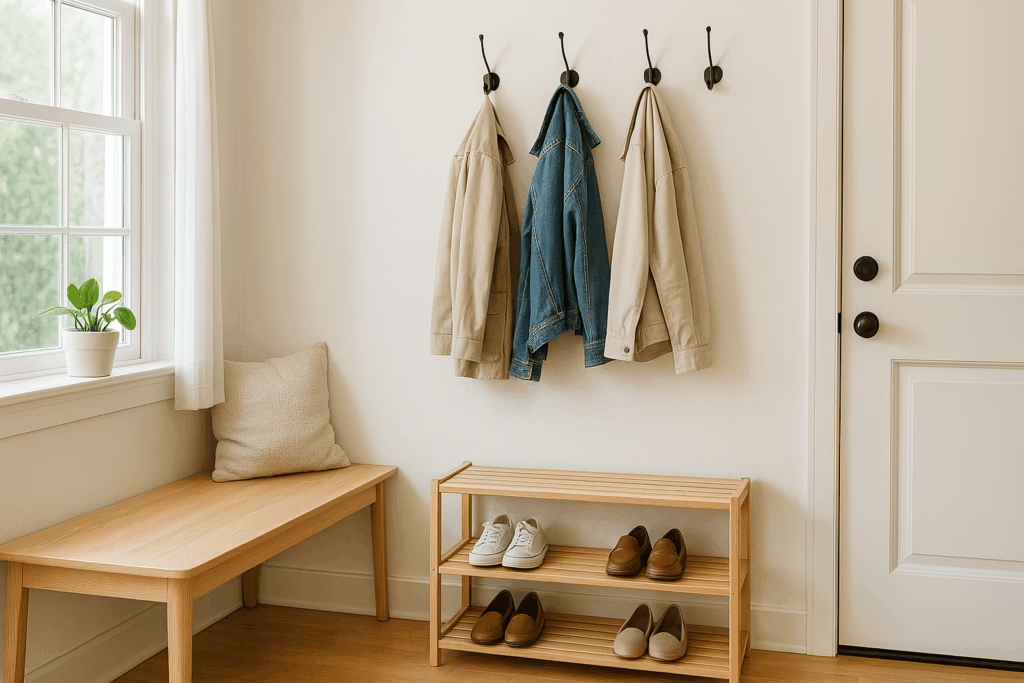
Living with less stuff and decluttering doesn’t end once the bags are donated or the trash is taken out. The real challenge—and reward—lies in maintaining your newfound calm. Without a plan, it’s all too easy for clutter to creep back in. The good news is, you don’t need to be perfect. Just a few simple, mindful habits can keep your home feeling light and organized.
Start with small, daily routines. Spend five minutes each evening tidying up surfaces—clearing mail, putting shoes away, folding blankets. Weekly “mini-declutter” sessions help, too: pick a different drawer, shelf, or digital folder to tackle. Mindful shopping is essential; before bringing anything new into your home, ask if it fills a genuine need or if it’s just a quick fix for boredom or stress.
Simple storage solutions, like baskets by the door for keys or a tray for incoming mail, make staying organized almost automatic. If you live with others, involve them in the process—set clear, shared expectations for tidiness. And don’t forget digital spaces! Unsubscribe from newsletters you never read, delete unused apps, and regularly back up your most important files.
Apartment Therapy’s guide to keeping your home clutter-free is packed with actionable tips for every lifestyle and living situation.
Maintaining a clutter-free home is about progress, not perfection. With consistent habits, living with less stuff and decluttering becomes a natural, sustainable part of daily life.
7. Decluttering and Emotional Well-Being
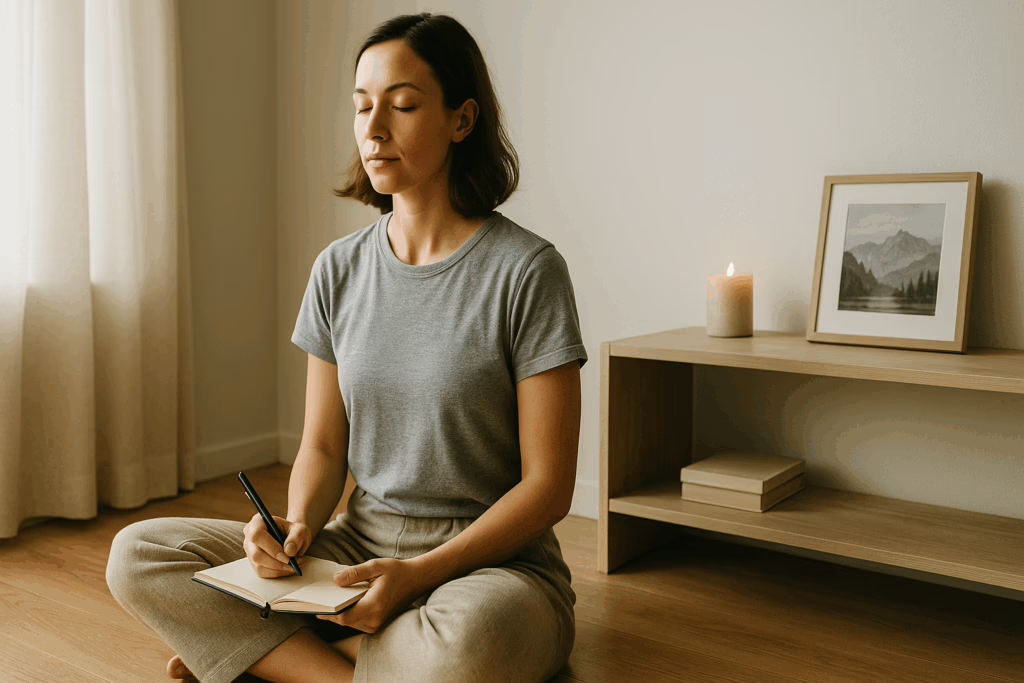
Living with less stuff and decluttering is about so much more than having an organized closet—it’s a powerful tool for emotional wellness. Cluttered spaces often mirror a cluttered mind. Research shows that excessive belongings can contribute to feelings of stress, anxiety, and even guilt. When your environment is chaotic, it’s harder to unwind and truly relax at home.
The act of decluttering itself can be deeply therapeutic. Sorting through your things encourages you to reflect on what you value and what you’re ready to let go of. Sometimes, parting with sentimental items or gifts feels emotional. If that’s the case, take your time. It’s perfectly normal to feel attached to objects that hold memories. Consider taking photos of especially meaningful items before letting them go or passing them on to loved ones who will cherish them.
Decluttering is also an act of self-care. As you clear out the excess, you may find it easier to focus, sleep better, and feel more energized. For those struggling with major life transitions—like moving, divorce, or loss—simplifying your space can provide comfort and a sense of control.
If decluttering feels overwhelming or brings up strong emotions, don’t hesitate to reach out for support. Whether it’s a friend, a professional organizer, or a therapist, help is available. Psychology Today discusses the emotional benefits of tidying and how it can positively impact your mental health.
Ultimately, living with less stuff and decluttering can lighten your mental load, create a sense of peace, and help you reconnect with what truly matters.
8. Practical Decluttering Tips for Every Room
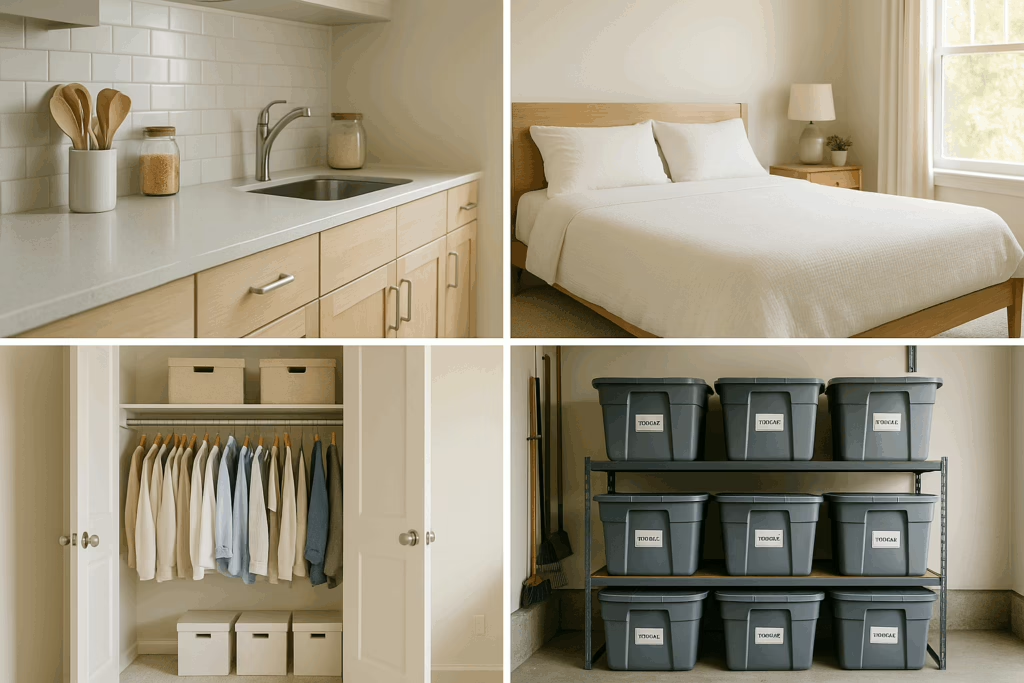
Living with less stuff and decluttering gets much easier when you break it down room by room. Each space has its own challenges, but a few practical strategies make the process smoother—and even enjoyable.
Kitchen: Start with countertops. Clear away appliances you rarely use and group similar items together. Expired pantry foods and mismatched containers are easy wins. Use drawer dividers or shelf organizers to keep things tidy.
Bedroom: Focus on your bedside tables and clothing storage. If your closet is overflowing, try turning all your hangers backward; after wearing an item, put it back the right way. At the end of a season, donate what’s still backward. Keep only what fits, feels good, and gets used.
Closet: Apply the “capsule wardrobe” concept—keep versatile, loved pieces and let go of duplicates or items that no longer suit your style. Fold or hang clothes neatly and use baskets for accessories.
Garage/Basement: These spaces tend to collect “just in case” items. Sort into categories, dispose of broken tools, and store seasonal gear out of the way. Label bins for quick access and consider vertical storage solutions for bulky items.
Sentimental Items: These can be the hardest to part with. Pick a small box or bin for truly meaningful treasures and revisit it each year. Donate or recycle what no longer holds real significance, and remember—a photo can preserve a memory just as well as the object itself.
For room-by-room guides and extra inspiration, Good Housekeeping offers a detailed decluttering roadmap.
By addressing each space thoughtfully, living with less stuff and decluttering becomes an empowering routine—one that supports a cleaner home and a clearer mind.
9. The Long-Term Rewards of Living with Less Stuff

Living with less stuff and decluttering isn’t just about a clean home—it’s an ongoing investment in your happiness, freedom, and peace of mind. Over time, the positive effects reach far beyond what you see on the surface.
One of the greatest rewards is flexibility. With fewer possessions to manage, you’ll spend less time cleaning, organizing, or searching for lost items. This means more time and energy for the things you truly love—whether that’s family, hobbies, or simply relaxing in a space that feels like your own.
Financial freedom often follows. When you’re mindful about what you own, you spend less on impulse buys and more on what matters most. Many people find they have more savings, less debt, and a clearer sense of what brings them joy.
The benefits ripple outward to your family and community, too. Children learn the value of experiences over things, and shared spaces become more peaceful and enjoyable. Letting go of clutter can even inspire generosity, as you donate useful items to those in need.
Most importantly, living with less stuff and decluttering creates room for personal growth. With fewer distractions, you’re more present, more creative, and more content. You may even feel a new sense of confidence—knowing your home reflects your true priorities.
Ready to make a change? Start small, stay consistent, and watch how your life transforms, one drawer and one decision at a time.
